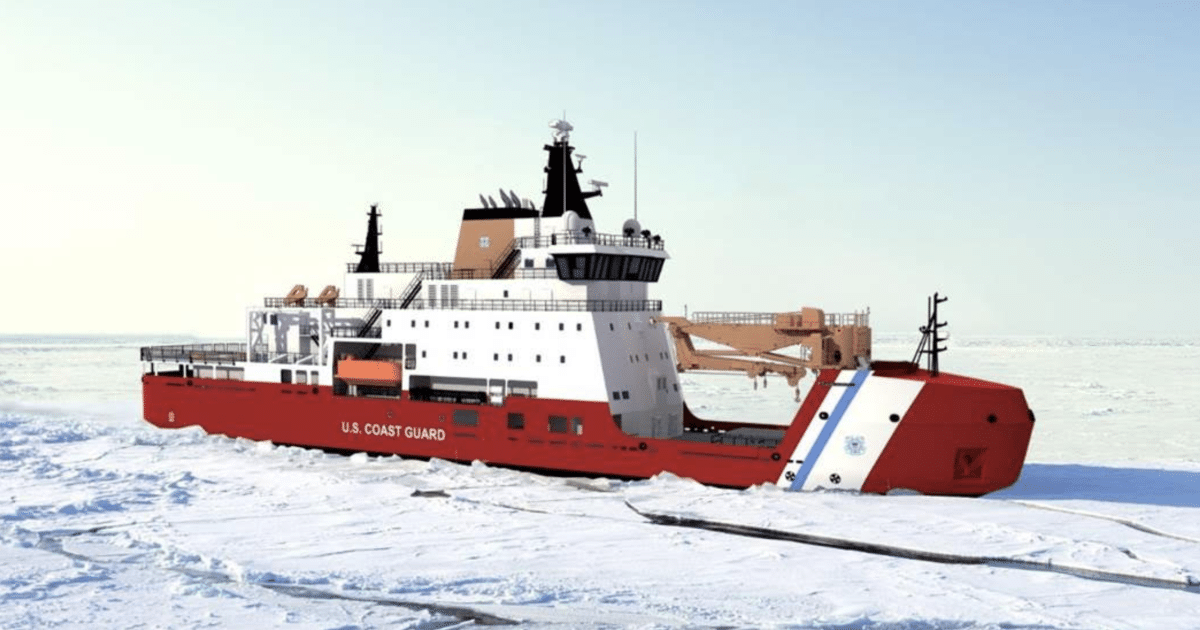Coast Guard Moves to Boost Icebreaker Fleet

The U.S. Coast Guard is taking significant steps to enhance its icebreaker fleet with the upcoming acquisition of new vessels designed to complement the larger Polar Security Cutter. Currently, one of these cutters is under construction at Bollinger’s facility in Mississippi, with plans for two additional vessels in the 2030s. The Coast Guard aims to have the new Arctic Security Cutters (ASC) operational within 36 months of awarding the contract, a timeline that encourages collaboration between U.S. shipyards and Finnish firms known for meeting such deadlines.
Competitive Landscape for Icebreaker Construction
In addition to the Bollinger-led consortium, Canadian shipbuilder Davie is positioning itself to compete for the ASC construction contract with a rival design. Davie Shipbuilding has strengthened its bid by acquiring the Finnish Helsinki Shipyard in 2023, which enhances its capabilities in icebreaker construction. Furthermore, Davie announced plans in June to acquire assets along the Texas Gulf Coast, aiming to expand its presence in the U.S. market.
Traditionally, U.S. defense spending has favored domestic firms; however, the urgent need for new icebreakers may prompt a presidential waiver to allow international partnerships. Political factors will undoubtedly influence the awarding of contracts. The initial batch of ASC icebreakers is expected to be partially or fully constructed overseas, with the possibility of shifting production to U.S. yards in the future, contingent on knowledge and technology transfer agreements.
Both the Bollinger and Davie proposals emphasize their ability to rapidly scale production to meet the 36-month deadline while showcasing U.S.-based assets for long-term contracts. Bollinger is likely to utilize its Canadian partner Seaspan’s design for the Multi-Purpose Icebreaker (MPI), while Davie may leverage the established Multi-Purpose Polar Support Ship (MPPS) design. Although both designs meet the Coast Guard’s requirements, the MPPS boasts superior engine power, endurance, and range. However, the MPI’s potentially lower acquisition and operational costs could make it a more appealing option for the Coast Guard, which is currently grappling with a maintenance backlog nearing $7 billion.
Canada Places Order with Seaspan for Construction of Heavy Polar Icebreaker
Future Implications for U.S. Maritime Operations
The push for new icebreakers is not just about enhancing capabilities; it reflects a broader strategy to secure U.S. interests in Arctic waters. As climate change opens new shipping routes and increases access to natural resources, the need for a robust icebreaker fleet becomes critical. The Coast Guard’s initiative to expedite the construction of these vessels underscores the urgency of maintaining a strong maritime presence in the region.
As the competition heats up between U.S. and Canadian shipbuilders, the outcome of this contract could set a precedent for future collaborations in defense spending. The integration of international expertise may not only accelerate production timelines but also foster innovation in shipbuilding practices. Ultimately, the decisions made in the coming months will have lasting implications for the U.S. Coast Guard’s operational readiness and its ability to navigate the challenges posed by a changing Arctic landscape.
